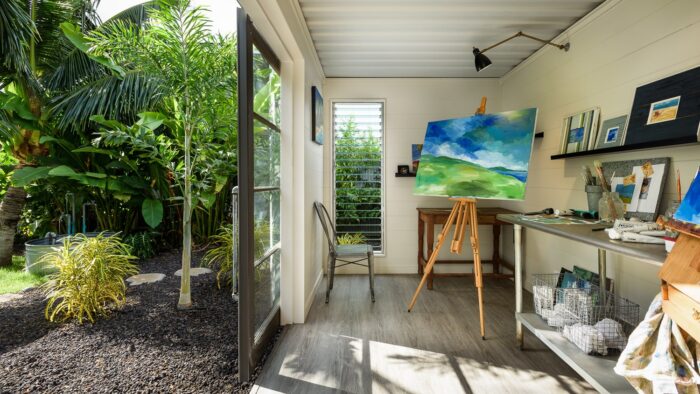
Shipping container modification once a niche concept, has rapidly gained popularity over the years as people discover the limitless potential these sturdy, rectangular structures offer. While these containers were originally designed for transporting goods across the globe, they can be transformed into a wide range of innovative, functional and aesthetically pleasing spaces.
In this blog post we will explore the world of shipping container modification, diving into the creative possibilities, benefits, challenges, and how to get started with your own container project.
The Art of Shipping Container Modification
Shipping container modification is a fascinating blend of architecture, engineering and design. It involves the transformation of these industrial containers into usable, habitable and inspiring spaces. The possibilities are as diverse as the people and ideas behind them, making each project a unique work of art.

Benefits of Shipping Container Modification
- Sustainability: One of the most significant advantages of shipping container modification is its eco-friendliness. By repurposing existing containers, we reduce the demand for new construction materials, thus helping conserve resources and reduce waste.
- Durability: Shipping containers are built to withstand the harshest conditions, making them exceptionally durable. They can endure extreme weather, transportation and even the challenges of time.
- Cost-Effective: When compared to traditional construction; the use of shipping containers can be much more cost-effective. The container itself is a substantial portion of the structure, which significantly reduces material costs.
- Speed: Modification projects can be completed relatively quickly. The container’s basic structure is already in place, allowing for speedy customization and minimal site disruption.
- Mobility: Shipping containers are inherently mobile. Whether you need to move your container-based structure across your property or relocate it to a new location entirely, it can be done with relative ease.
- Endless Possibilities: From tiny homes, offices and pop-up shops to art studios, classrooms and even swimming pools, there is virtually no limit to what you can create with a shipping container.
Need Extra Space? Check Our Shipping Containers! Our shipping containers for sale offer an affordable solution for additional storage or creative projects. Website: www.usedconex.com
Common Shipping Container Modification Projects
- Tiny Homes: The tiny house movement has embraced shipping containers as a cost-effective and sustainable way to downsize without sacrificing comfort and style.
- Offices: Shipping containers make great office spaces, offering a comfortable, efficient and highly mobile solution for remote work or small businesses.
- Pop-Up Shops: The trend of pop-up shops and food stalls has exploded in recent years, and containers provide a ready-made structure that can be easily customized to showcase products and attract customers.
- Art Studios and Workshops: The creative community has wholeheartedly embraced container modifications, using them as spacious, well-lit studios to foster artistic expression.
- Classrooms and Learning Centers: Containers have been transformed into educational spaces in both urban and rural settings, providing accessible and functional learning environments.
- Restaurants and Cafes: Containers create unique and trendy spaces for restaurants and cafes, offering a memorable dining experience.

Challenges and Considerations
While shipping container modification presents numerous benefits, there are challenges and considerations to keep in mind:
- Insulation: Shipping containers were not designed for human habitation; so insulation is essential for maintaining comfortable temperatures inside. Proper insulation is critical for both energy efficiency and occupant comfort.
- Regulations: Zoning, building codes, and local regulations can vary significantly, and it’s crucial to ensure your project complies with these requirements. This might include permits, inspections, and other legal considerations.
- Site Preparation: Containers need a stable and level foundation, and proper site preparation is essential to ensure the longevity of the project.
- Customization Costs: The cost of modifications can add up, particularly if you have extensive custom requirements such as windows, doors, plumbing, and electrical installations.
- Maintenance: While containers are durable, regular maintenance is necessary to prevent rust and other issues that can affect their structural integrity.
- Ventilation: Adequate ventilation is essential to prevent moisture buildup and ensure a healthy indoor environment.
How to Get Started with Shipping Container Modification
If you’re intrigued by the possibilities of shipping container modification, here’s a step-by-step guide to help you get started:
- Define Your Project: Determine the purpose of your modified container. Is it for a home, office, shop or something else? Be clear about your goals and requirements.
- Plan and Design: Work with an architect or designer to create detailed plans for your project. Consider insulation, layout and all the necessary modifications.
- Acquire a Container: Source a suitable container. You can choose between new or used containers, but make sure it’s in good structural condition.
- Site Preparation: Prepare the site by leveling the ground and creating a stable foundation. This is crucial for the container’s stability and longevity.
- Customization: Customize the container according to your design. This may include cutting openings for doors and windows, insulation, and the installation of any necessary utilities.
- Comply with Regulations: Check local regulations and obtain any required permits before starting the modification.
- Construction: Begin the modification work, which may involve welding, insulation, electrical work, plumbing and interior finishing.
- Inspection and Quality Control: Conduct inspections to ensure that all work is up to code and meets safety standards.
- Interior Furnishing: Complete the interior design, including any furniture, fixtures and decor to make the space functional and aesthetically pleasing.
- Maintenance Plan: Establish a maintenance plan to ensure the long-term durability of your container-based structure.

Conclusion:
Shipping container modification is a fascinating field that opens up a world of creative possibilities. Whether you’re looking for an eco friendly, cost-effective or highly mobile solution, shipping containers can be transformed into an array of functional and visually striking spaces. While there are challenges and considerations to navigate, the rewards of turning a rugged industrial container into your dream space are well worth the effort. So, whether you’re envisioning a cozy tiny home, an efficient office, a chic pop-up shop, or any other unique project, let your creativity soar and turn a shipping container into something truly exceptional.




